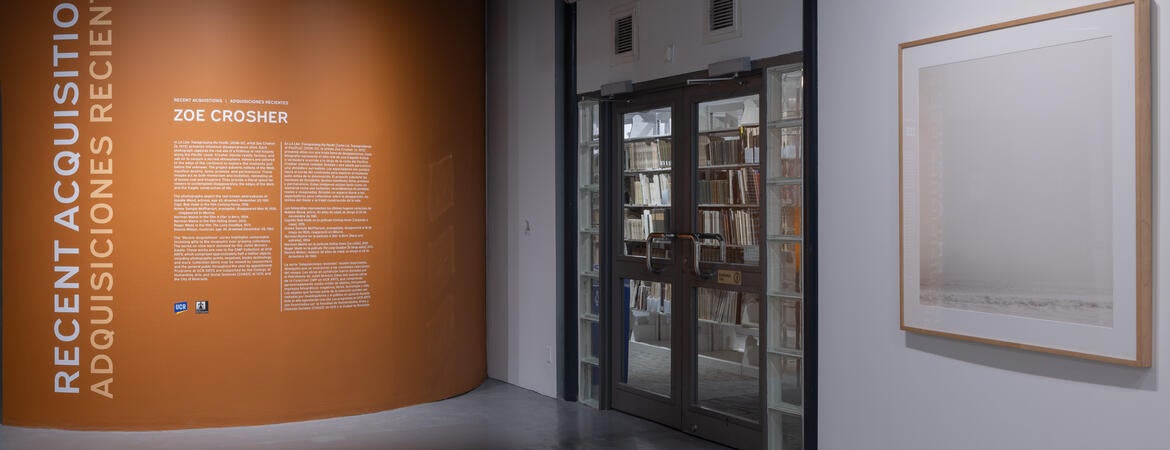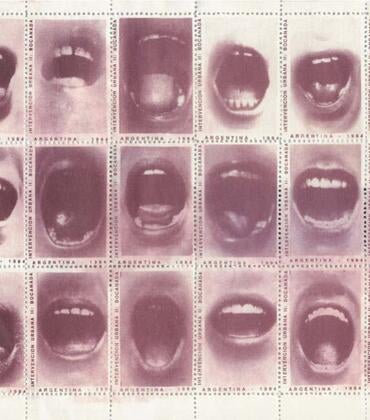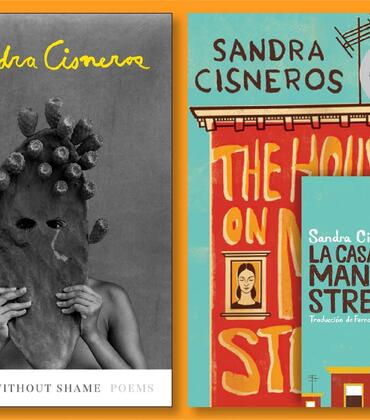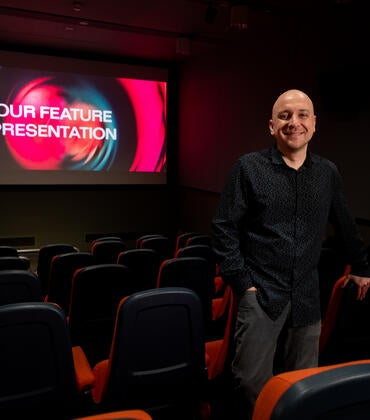
The first exhibition in the New Acquisitions Series is the artist Zoe Crosher’s seven photographs that make up "LA Like: “Transgressing the Pacific (2008–10).” Alyse Yeargan, collections manager for the UCR Arts’ California Museum of Photography, or CMP, says she chose Crosher’s photographs for several reasons. The works are “emotionally impactful and beautiful, they focus on California, and the seven photographs, at 49.5 x 49.5 inches, fit the (gallery) space perfectly,” Yeargan said. “I’m excited for people to see them.”
Yeargan said the New Acquisitions Series will highlight installments in the collection , “that wouldn’t otherwise be seen.”
“We have great works in our archive from great donations that we wanted to share with the public,” Yeargan said.
The photographs present fictitious or real locations where drowning, disappearances, and other unfortunate events occurred . The photographs were a gift of the Juliet McIvers Estate in July 2023.
“It’s the only complete series. No one else has collected all the photos,” Crosher said. “I’m thrilled to have these photographs on the wall. They’re meant to be seen in person and not as JPEGs.”
In June the photographs will travel to New York City for a summer group show.
“I was initially inspired by a friend who spontaneously wanted to go swimming in the Pacific at night. There’s that thrill of initially wading into the Pacific - and then you get into it and you realize it can be such a dark, cruel and unforgiving place (not unlike Los Angeles!),” said Crosher, whose work focuses on the West. “So much of Los Angeles literature and cinema is my overarching inspiration - the first shot taken in the series was from that chilling disappearance scene in ‘The Long Goodbye.’”
The simple wood frames and white matting in the brightly lit CMP gallery are like giant square windows into the littoral space of the photographs and the fuzzy area between what is true and what is fiction or outright fraud.
The poet Alfred, Lord Tennyson used going to sea to represent sailing toward heaven in his poem “Crossing the Bar.” He was no doubt influenced by Greek mythology, and,sailing west to the Blessed Island. But here, the dead are missing. Only the place remains. In some cases, Crosher is unsure if it’s the actual location. For instance, even with all her research, there is a discrepancy between where the character Bob Hyde in “Coming Home” walked into the Pacific to commit suicide in the film and where the scene was filmed. In the case of Aimee Semple McPherson, the pioneer of radio evangelism, the Ocean Park Pier where she faked her disappearance doesn’t exist anymore.
These images create tension because we can’t be sure of what is truth and what is fabricated. In the image taken on Catalina Island, where Natalie Wood drowned under mysterious circumstances in 1981, the yacht she was on with Robert Wagner and Christopher Walken is not there. With a blood-alcohol content of 0.14% coupled with pain killers and a motion-sickness pill, her cause of death was ruled an accident but was recently reclassified as a “suspicious death.” The other location of “actual” tragedy is at Marina Del Rey, where musician Dennis Wilson drowned in 1983. His tragic death wasn’t a mystery. After drinking all day on his boat in its slip, he dove into the water.
But part of the illusion of Los Angeles is that we care more, or at least the same, about theatrical deaths as we do about actual deaths. From Goose in “Top Gun,” to Jack drowning in the North Atlantic in “Titanic,” to Rue in “The Hunger Games,” to Thelma and Louise flying over the lip of the Grand Canyon, their deaths moved us to tears. The emotional resonance isn’t an illusion.
Here is the collusion point among Crosher’s seven powerful, surreal photographs. We are looking at crime scene photos, both real and imagined. They expose, through absence, the reality of Los Angeles underlying the myth of Los Angeles and how we can’t help but confuse reality with fiction.
Consider Crosher a private investigator in an L.A. noir detective story who has returned from the crime scenes at the western edge of the continent with photographic evidence. She can go no further. Now it is up to you to contemplate it.
"Recent Acquisitions: Zoe Crosher " will be at the UCR Arts California Museum of Photography through March 30. A winter reception will be Saturday, Feb. 10 from 3 to 6 p.m., and is free and open to the public.



